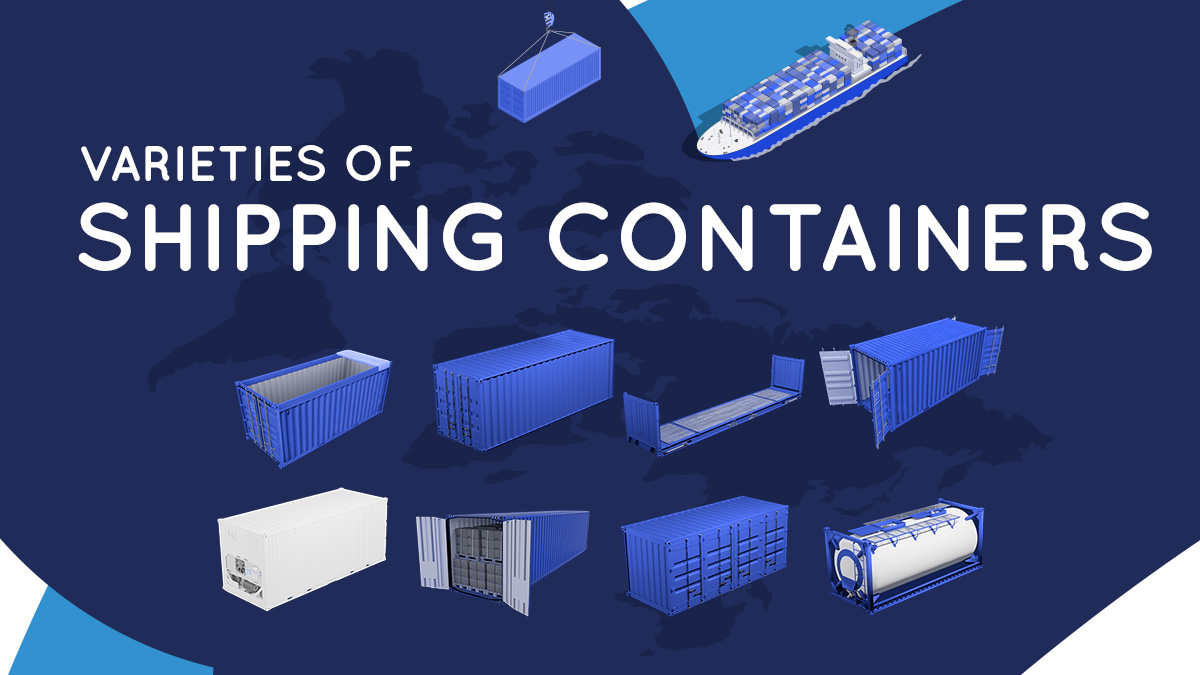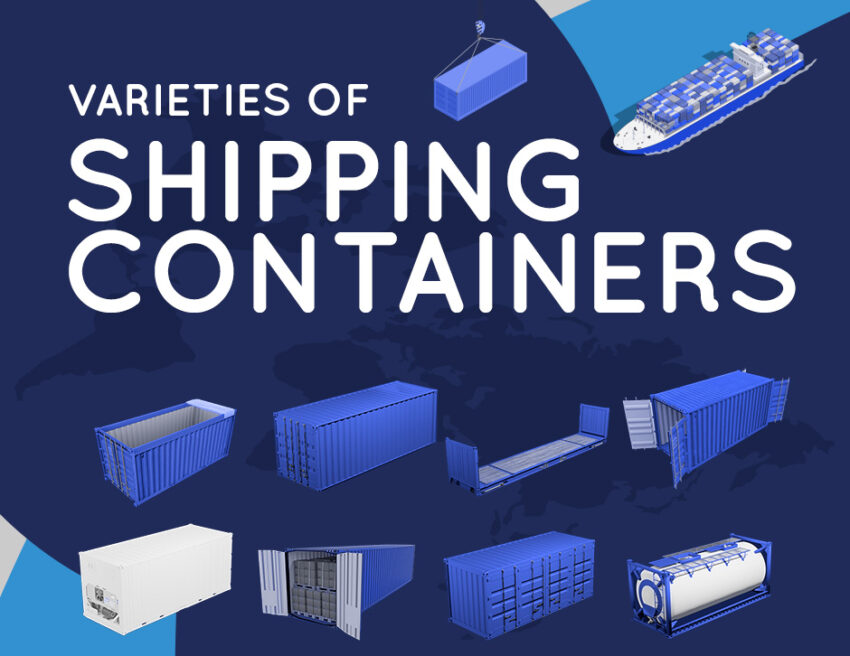The ocean freight shipping industry shoulders the responsibility of transporting a remarkable 90% of all internationally shipped goods. Despite faster delivery offered by alternative modes of international transport, they often come with a heftier price tag. Hence, when organizing an overseas shipment, the selection of an ocean container tailored to your specific requirements is paramount. Choosing the appropriate container size not only enables logistics companies to optimize costs but also plays a pivotal role in safeguarding the secure and intact arrival of the shipment. While this task may seem straightforward at first glance, it demands meticulous consideration of various factors before settling on the ideal container that aligns with your needs.
Moreover, shipping containers vary significantly in size and physical characteristics, underscoring the importance of selecting the right container type based on the cargo’s nature. Freight forwarders must exercise due diligence in container selection to ensure that the shipment reaches its destination in the same pristine condition as when it was loaded.
In this article, we will provide a comprehensive guide to assist you in navigating the intricacies of container selection, enabling you to make informed decisions and optimize your shipping processes effectively.

Kinds of containers used in ocean freight shipping
Before discussing the kinds of containers used to move your sea freight shipment, let’s take a quick look at the various container sizes you can choose from.
Selecting the Size of the Containers
When selecting the appropriate container for your cargo, considering the size of the container is crucial to ensure optimal transportation. The ocean freight industry commonly utilizes 20-foot containers, also known as 1 TEU (Twenty-foot Equivalent Unit), for shipping cargo. These containers are best suited for heavy items rather than voluminous goods. Examples of suitable shipments for 20-foot containers include metals, machinery, cement, steel rods/coils, sugar, and similar heavy commodities.
Alternatively, 40-foot containers, or 1 FFE (Forty-foot Equivalent), are prevalent and well-suited for transporting voluminous cargo rather than heavy items. They are ideal for goods such as steel pipes, paper, garments, furniture, and similar bulky items.
For cargo requiring additional vertical space, 40 HC (High Cube) containers offer an excellent solution. While they share the length of standard 40-foot containers, 40 HC containers feature increased height. They are suitable for items that are not overly heavy but benefit from extra vertical clearance. It’s essential not to exceed weight limits when loading 40 HC containers, as they are not designed for heavy goods. These containers are commonly used for transporting tall cargo that can utilize the added height.
By considering both the size and weight limitations of containers, forwarders can ensure that cargo is appropriately accommodated and transported safely, optimizing efficiency and minimizing risks during transit.
Containers for OOG Cargo
Selecting the appropriate container for out-of-gauge (OOG) shipments poses a unique challenge. Freight forwarders must carefully consider their options, weighing the advantages of flat rack containers against open-top containers for transporting OOG cargo.
-
Open Top Containers
Open-top containers present an optimal solution when your cargo surpasses the height constraints of standard 20-foot or 40-foot containers, yet doesn’t necessitate the additional height offered by high cube containers. While the top of these containers isn’t entirely exposed, it’s typically covered with a tarpaulin. This configuration facilitates effortless loading and unloading of your out-of-gauge (OOG) shipment from the top, utilizing a crane for efficient handling.
-
Flat Rack Containers
Flat rack containers are characterized by their expansive horizontal metal frame, typically boasting a height of approximately 10 feet and lengths that can extend up to 60 feet or even beyond. Available in three primary sizes—20 feet, 40 feet, and 53 feet—these containers are purposefully designed to accommodate heavy or oversized cargo that cannot be accommodated within standard shipping containers.
Renowned for their versatility, flat rack containers serve as an exceptional choice for transporting a wide array of bulky items, including construction equipment, certain types of machinery or engines, wind turbines, and similar oversized cargo. Their utility is particularly evident in scenarios where conventional methods for moving crates across uneven surfaces are impractical.
Moreover, flat rack containers offer logistical flexibility, as they can be seamlessly transported via road on open trucks or specialized trailers, further enhancing their appeal for freight forwarding operations.
Containers for perishable shipments
-
Reefer Containers
Refrigerated containers, commonly referred to as reefer containers, are purposefully engineered to maintain temperatures significantly lower than standard containers. When transporting perishable goods such as pharmaceuticals, vegetables, meat, dairy products, flowers, and other temperature-sensitive items, selecting the appropriate reefer container is paramount.
Equipped with sophisticated refrigeration and insulation systems, reefer containers ensure that your shipment remains within the prescribed temperature range throughout its journey. Typically set at -10 degrees Celsius, these containers provide a controlled environment that safeguards the integrity of perishable goods during transit.
In addition to precise temperature control, reefer containers feature large sliding doors that facilitate seamless loading and unloading of goods, enhancing operational efficiency. Recent advancements in technology have further enhanced the design of these containers, rendering them safer and more efficient for transporting temperature-sensitive items, thereby meeting the evolving needs of the industry.
Containers for Valuable Cargo
-
Tunnel Containers
In the ocean freight shipping industry, when transporting valuable goods, forwarders are advised to opt for tunnel containers, also known as double-door containers. These specialized dry freight containers are distinguished by their doors located on both ends, a design feature that greatly expedites the loading and unloading process.
Tunnel containers boast an additional layer of metal and specialized locks, enhancing security measures. As a result, they are ideally suited for transporting valuable or high-risk shipments, such as high-value paintings or sculptures, precious metals, gems, cash, and other expensive items.
Containers for non-hazardous liquid
-
Flexitank Containers
Flexitank containers emerge as the preferred choice for transporting non-hazardous liquids like cooking oil, wine, beer, and similar substances. These specialized containers comprise a sizable bag installed within a standard 20-foot container. Tailored to accommodate liquid cargo, the bag is securely positioned within the container to mitigate movement during transit.
Renowned for their cost-effectiveness and efficiency, Flexitank containers offer a practical solution for shipping bulk liquids. They provide a safe and reliable means of transporting non-hazardous liquids in substantial quantities, ensuring that the cargo reaches its destination in optimal condition.
By using Flexitank containers, businesses can streamline their logistics operations while minimizing costs associated with liquid transportation. This innovative solution underscores the industry’s commitment to enhancing efficiency and meeting the evolving needs of clients in the global marketplace.
Containers for Dangerous Goods
-
IMO Containers
When transporting hazardous goods such as dangerous liquids, gases, or radioactive materials, the selection of tank containers or IMO containers is paramount. Termed IMO containers due to oversight by the International Maritime Organization (IMO), these containers are instrumental in ensuring the safe transportation of hazardous cargo, mitigating environmental risks.
Tank containers are purpose-built for the transportation of dangerous goods, featuring a cylindrical tank crafted from corrosion-resistant materials. Enclosed within a robust steel frame, these tanks offer enhanced protection during transit. Some tank containers may even incorporate multiple compartments, separated by partitions, to accommodate different types of cargo.
It’s crucial to highlight that tank containers utilized in ocean freight shipping may contain non-liquid cargo, potentially including electrical components. These components necessitate periodic inspection and annual certification by a third-party entity to uphold container integrity and ensure operational safety. This rigorous oversight underscores the industry’s commitment to maintaining the highest standards of safety and compliance in the transportation of hazardous materials.


